#female masculinity
Text

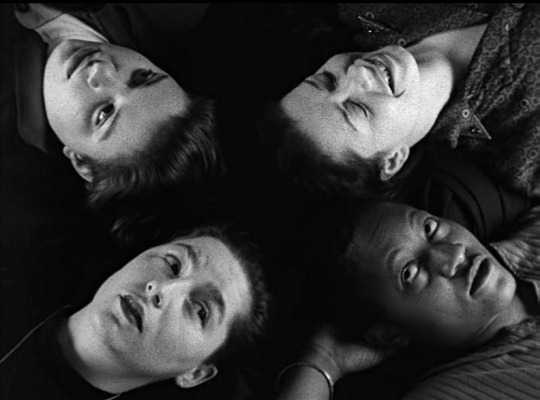
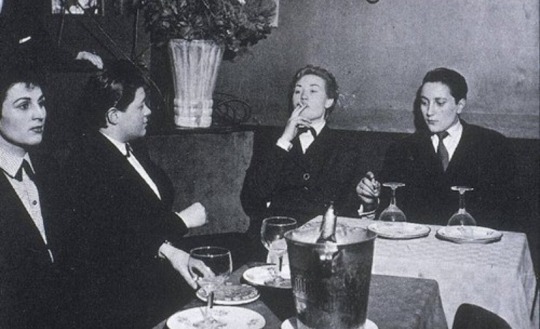
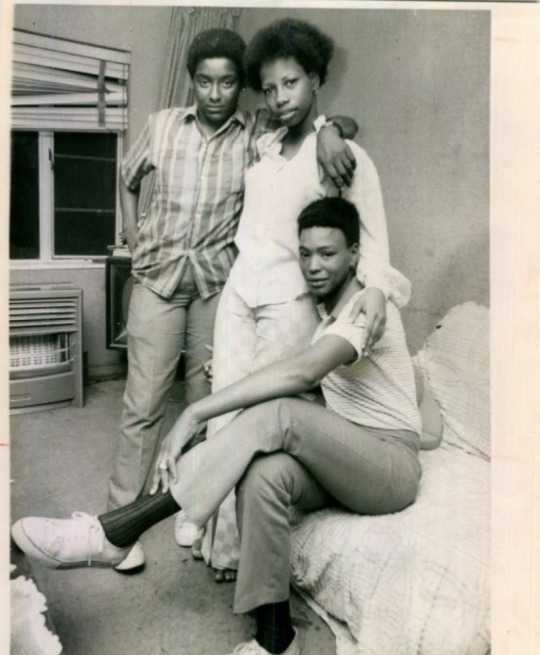


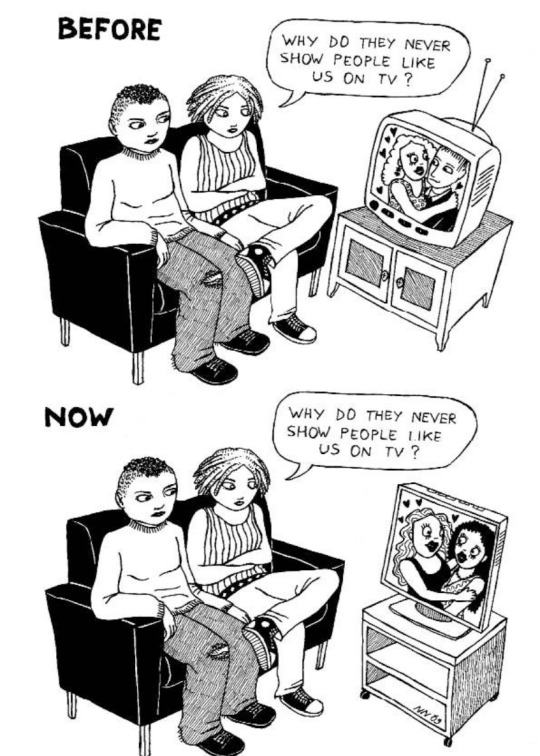
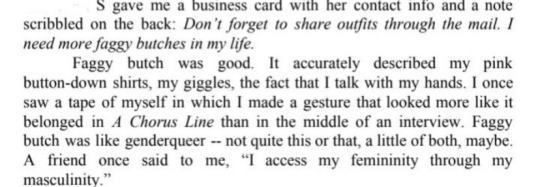


butch
alison bechdel / leslie feinberg / nina nijsten / miriam zoila perez / tumblr user queermasculine / karleen pendleton jimènez
25K notes
·
View notes
Text

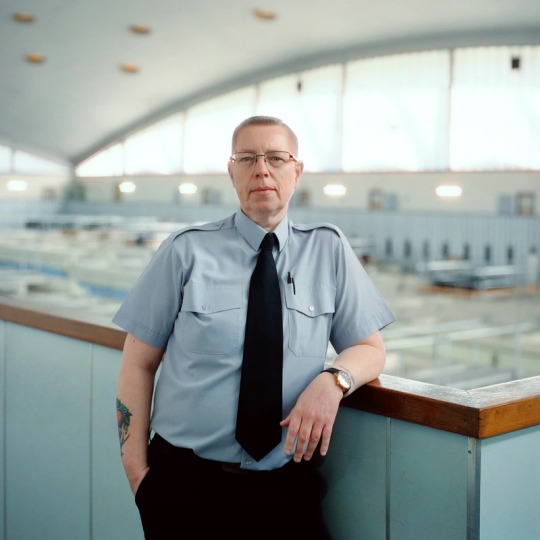


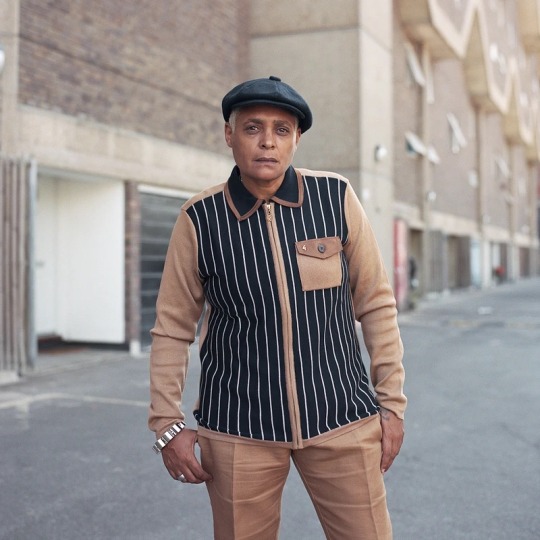


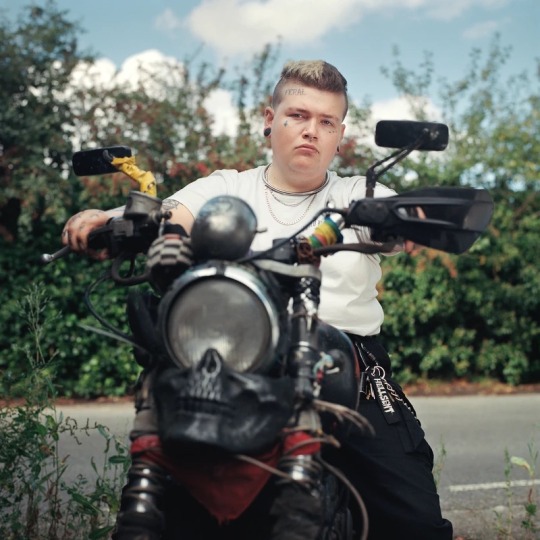
Roman Manfredi We/Us
Butches and Studs from working class backgrounds within the British landscape
Co-curated by Ingrid Pollard
Exhibition: 9 March – 3 June 2023 at Space station 65, Kennington, London
Opening hours: 12 – 6PM, Wednesday – Saturdays
Free to visit. Accessible. All welcome.
We/Us is an intergenerational photography and oral history project that celebrates the presence of butches and studs from working-class backgrounds within the British landscape. The project explores the experience of female masculinity through the structures of class and race all over the UK, capturing our diversity as well as our commonality.
When searching for images of butches and studs online, most that come up are from a bygone era, or from the US. Conversations around gender and identity today are often academic and London-centric, sometimes forgetting that our identities are informed by our every day lived experiences.
Our history and our lived experience is our gift to the world.
– Joan Nestle, Restricted Country
Exhibition audio - Participants were interviews about their lives and experiences,
Instagram
Vice uk feature
#posting this incredible exhibition with all the relevant information#dyke#butch#stud#masc#butch lesbian#stud lesbian#butch femme#Joan nestle#Ingrid pollard#Roman Manfredi#uk butch#lesbian#stud femme#butch4butch#butch dyke#masc lesbian#female masculinity#butch positivity#lesbian positivity
3K notes
·
View notes
Text
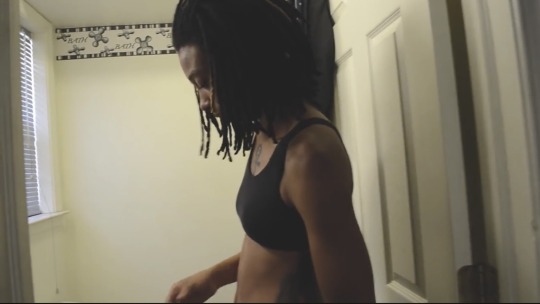

Screengrab taken from the YouTube series ‘studs world’
#studsworld#black studs#studs#dykes#butches#black lesbians#bisexuals#black butches#poc#indigenous#black dykes#female masculinity#transmasc#mascs#transmasculinity#black gnc#black nonbinary#gnc#nonbinary#cinemetography#butch portraits#gay portraits#photography
785 notes
·
View notes
Text
“For all our boyish clothes and mannerisms... we women did not pass as men or boys... our point was not to be men; our point was to be butch and get away with it... A dyke learns much of her social function from other dykes... Whether she ever has the chance to enter a Gay bar or not, she imitates dykes, not men. She may identify with traditionally dyke figures: Diana the Huntress, Beebo Brinker, Gertrude Stein, Bessie Smith, Natalie Barney, Queen Christina, Joan of Arc, Amy Lowell, Oya, St Barbara, modern athletes, and other leaders... the social message she bears and is delivering is not ‘I am a man’ but rather ‘Here is another way to be a woman.’”
-- Judy Grahn
#compulsory femininity#female masculinity#gender non conformity#gnc#lesbian culture#lesbian womanhood#many ways to be a woman#judy grahn#butch
473 notes
·
View notes
Text




Christy Turlington, Naomi Campbell and Linda Evangelista by Peter Lindbergh for Vogue Paris Magazine, February 1991
#one of my fav shoots ever#vogue paris#Christy Turlington#Naomi Campbell#Linda Evangelista#Peter Lindbergh#90s#androgyny#butch#female masculinity#photography
423 notes
·
View notes
Text
female masculinity by jack halberstam is a very interesting book. dense but i accidentally got like 40% through it in one evening. very illuminating about how there were distinct subcultures of masculine women and women who slept together for at least the past 200 years, enough so that there are a multitude of stories of women having loads of female partners. i knew that these women existed, but halberstam makes a convincing case for prominent cohesive subcultures with their own signifiers and ways of knowing and identifying each other as far back as the early 1800s. also a fascinating look at the range of relationships women have had with masculinity and their own womanhood or non-womanhood. definitely a necessary documentation
62 notes
·
View notes
Text

Source: Common Lives Lesbian Lives; A Lesbian Quarterly ( #36- Fall 1990 )
#butch positivity#butch love#butch strength#butch vulnerability#female masculinity#gnc lesbian#lgbt#image#photo#lesbian#art#lesbian history#lesbian art#lesbian positivity#lesbian drawing
57 notes
·
View notes
Text
Tomboys are not always lesbian/trans.
Single people are not always aro/ace.
There should be a word for feminine guys who are not gay/trans (if it's not shameful to be a tomboy, why should it be shameful to be a straight feminine man. P.S. I dont mean men who wear dresses but rather men who like stuff that are considered feminine like cooking, pink, sewing, expressing their emotions etc.)
Changing genders should be illegal for kids below 18 (they are way too young to make such life changing decisions).
#some random thoughts i had on lgbt#id love to hear your random thoughts too#lgbtq#lgbtqia#lgbtq community#lesbian#aromanitc#asexual aromantic#asexual#ace aro#my thoughts#thoughts#society#big facts#tomboys#female masculinity#male feminist
86 notes
·
View notes
Text
By: Aaron Kimberly
Published: Dec 18, 2021
Between 1995-2006 I was a part of the butch lesbian community. During those years, despite my life-long and sometimes intense gender dysphoria, I hadn’t given any serious thought to medically transitioning. It wasn’t even on my radar as a possibility until after 2000. The idea of medically transitioning seemed fringe, far-fetched, and risky.
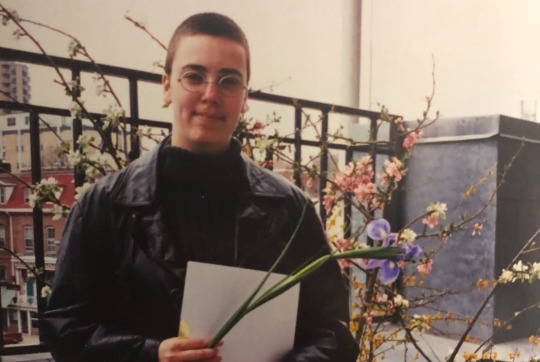
Most of the butches I knew also had gender dysphoria (GD) or rather, Gender Identity Disorder (GID), as it was called then. Many butches I knew in Winnipeg, Halifax, Toronto, and later Vancouver, were strong, stoic people. I admired many of them. I know that their lives weren’t always easy, but they carried themselves with dignity. They had butch “brotherhood” and femmes who adored them. Many were “stone” which meant that their GID made it difficult for them to relate to their female anatomy so didn’t allow themselves to be touched by anyone, or rarely. They were often harassed and abused for being masculine women, as I was. It was often stressful using female public washrooms, because our gender ambiguity made people so uncomfortable. There was a term “butch bladder” to reference the ways we’d avoid using bathrooms in public.
In the early-mid 2000s, more and more FTMs were appearing in the community, alongside the butches. Many lesbian spaces welcomed them, some didn’t. It seemed to me at the time that butches were presented with two options: we could choose to be butches, or we could choose to be FTM “trans guys”. Why people chose one or the other...that was very individual and personal. It really came down to which option solved a problem and made life easier. The problem could be homophobic parents, fatigue from being harassed, differing degrees of dysphoria and bodily discomfort, not understanding what GID is, poor social or occupational functioning, trauma, other mental health challenges like depression or the anxiety that seemed inevitable for us. Some transitioned but still identified as butch women. They chose medical interventions to look more masculine, not to identify as men. Some trans guys said they never had GID at all. I don’t know what their motivations for transitioning were. Some said “political reasons”. There were some who were big fans of Queer Theory icons like Judith Butler and Judith Halberstam. Those women adopted male personas - intentional “female masculinity” - as an expression of Queer Theory, not to be men/male. I chose to transition soon after a gay man was beaten to death in a nearby park.
If kids with gender dysphoria today are anything like who we were 20 years ago, I feel saddened by their trajectory. Others see benefits: Access to medical interventions has been made easier. They no longer have to do a “real-life test” (live their life as the opposite sex for 2 years without medical assistance). They don’t have to go through months or years of therapy and assessment. More is now known about the effects and risks of hormones. The surgeries have improved, are easier to access and now paid for by insurance. (I paid for my own mastectomy out of pocket, and was on the SRS surgery waitlist for 10 years.)
But, what have we done? Have we eliminated all of the conditions for why a butch girl would find their innate masculinity hard to live with? Have we made the lives of butch women better and safer? Have we eliminated homophobic families, communities, employers, clinicians and policies? Are we educating young people what gender dysphoria is, in evidence-based terms, supporting them to integrate that into a healthy identity and self-image? Do we tell masculine girls how attractive they are? Do they have an abundance of healthy role models? Are they fully embraced and integrated into their workforces, educational settings, faith communities… or, are butches still getting weird looks from strangers? Are they still getting yelled at in public bathrooms? Are young, obnoxious young men still yelling slurs out their car windows as they drive by a butch woman? Do gender non-conforming women still fear for their lives in some places? Can they get Brandon Teena out of their heads? Can they travel the world freely? Can they find clothing they like that fits their bodies well?
I’m not convinced we’ve made any real progress at all. I think we’ve just made it easier for people to jump ship, younger and faster, and gave it a different spin. We now call that “self-actualization”. We’ve facilitated a better illusion. We’ve convinced more and more people that the illusion is real. We continue to push for better surgeries. Penile and uterine transplants are on the horizon. Young people are flooding into clinics. They can’t keep up with the demand. Activists have pushed Queer Theory as an explanation for our difference, displacing evidence-based clinical definitions of GID/GD. It’s no longer talked about as a condition that requires treatment but a natural human variation that requires affirmation in whatever form we demand (often life-long medicalization). I’ve travelled that road to its end, and its hurt just as much as it’s helped.

The surgeries available to FTMs right now are awful. A double mastectomy and phalloplasty or metoidioplasty are gruesome procedures to go through. The US surgeon I went to for metoidioplasty boasts low complication rates, but the anecdotal evidence I’ve witnessed (myself and everyone I know who had the procedure there and elsewhere) is close to a 100% complication rate. One guy at the surgical recovery centre I stayed at started to hemorrhage and was laying on the floor unable to reach the call bell when another FTM patient found him and advocated for him to be rushed to hospital. Fistulas and strictures are the most common problem. I chose metoidioplasty because it’s thought to be the less risky of the two options. I immediately developed two large fistulas (meaning that my urethra burst open in two places) that needed additional surgery to repair. I couldn’t bathe or go swimming for a year until those openings were repaired. I have chronic perineum pain, altered bowel function due to changes in my pelvic muscles, and no sensation in most of my chest. When we have complications, local physicians and surgeons don’t know what to do. So we have to wait, and travel to whoever can help.
Listen, I don’t doubt that sometimes medical transition is helpful for people. It’s not my place to say they can’t or shouldn’t. But let’s not sell this like it’s a Disney park ride. The marketing of everything trans is ridiculously misleading. Don’t put sparkles and rainbows over real pain as though that helps at all. It’s insulting.
If we really want to help these kids, we need to make it easier for lesbian kids. Butch kids. All gender non-conforming kids. The quirky and awkward kids. Kids who feel they don’t fit it. Let’s get better at working with parents and preserving families. Be honest about what medical transition is really about. No one really changes biological sex and these procedures are really hard to go through. Why are we putting all of our resources into escaping brutality rather than eliminating brutality? We’re cutting up our bodies because our lived reality is worse. Why do we celebrate that?
Medical transition is but one option for those with GD. We need to reclaim our understanding of GD as a condition so that we can have reality based-conversations and solve real personal and social problems. “Trans” as a concept, masks many underlying issues. A queer theory-based understanding of myself worsened my GD. Medical transition became an addiction. The illusion only works if we’re lucky enough to pass and everyone else plays along perfectly. It’s an exhausting game of whack-a-mole to dodge the reminders of my female past and female biology. How is that kind of dissociation desirable? Some people may benefit from medically transitioning, but we still need a reality-based understanding of ourselves, to keep our feet on the ground.
Our children deserve better. If this sounds transphobic to you, you’re a part of the problem. Owning our reality for what it is isn’t self-hatred. It’s self-acceptance. Having different ideas and a different vision of how to move forward isn't hatred. Hatred was the skinheads who circled around us at the small 1992 Winnipeg gay and lesbian march, long before Pride was a parade. Hatred was the men who drove from the suburbs into Vancouver with the intent to "kill a fag" and murdered Aaron Webster in Stanley Park. I’m well acquainted with phobia. This isn't phobia. This is love.
#Aaron Kimberly#Gender Dysphoria Alliance#butch lesbian#queer theory#gender ideology#medical transition#gender dysphoria#butches#female masculinity#religion is a mental illness
145 notes
·
View notes
Text

"Tomboys" from Female Masculinity (1998) by Jack Halberstam
132 notes
·
View notes
Text

19 notes
·
View notes
Text

Melody Melamed, Jess, The Book of Skin: Shangri-la (2023)
15 notes
·
View notes
Text
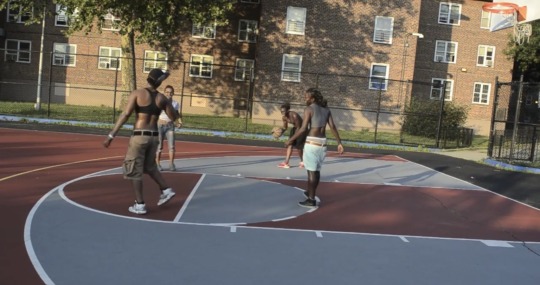
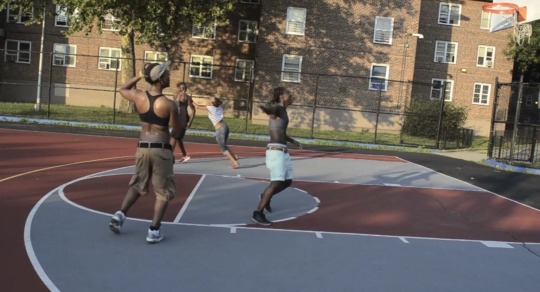
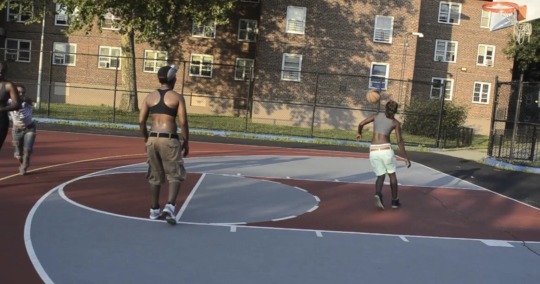

You playing ball with these handsome ass studs or you watching from behind the fence?
Screen grabs taken from ‘studs world’ a lesbian masculine off centre series on YouTube.
#studs in sports#lesbians in sports#handsome women#butvhes#studs#butch brotherhood#butch bros#black studs#dykes#black dykes#cinemetography#studsworld#black women#female masculinity#masculine presenting women#gnc#nonbinary#transmasc#mascs#basketball
277 notes
·
View notes
Text

Jack Halberstam, Female Masculinity
revel in the blurred lines between FTMs and butches!
44 notes
·
View notes
Text
I have noticed that I am a masculine woman only the the absence of a masculine man.
If there is a man around but he’s limp-wristed or incapable, I will continue to be the masculine woman to get things done.
I would like a break from masculinity.
3 notes
·
View notes
Text
There's something so important about acknowledging butch masculinity as something worth aspiring to. Butches get told they're "incorrect women" all the time, but they're so right to me.
Maybe I'm not really as masculine as I try to be. Maybe I'm only emulating the kind of women I admire and desire. Trying to become someone worthy of my own attraction. Maybe in the hopes that other women will agree.
3 notes
·
View notes